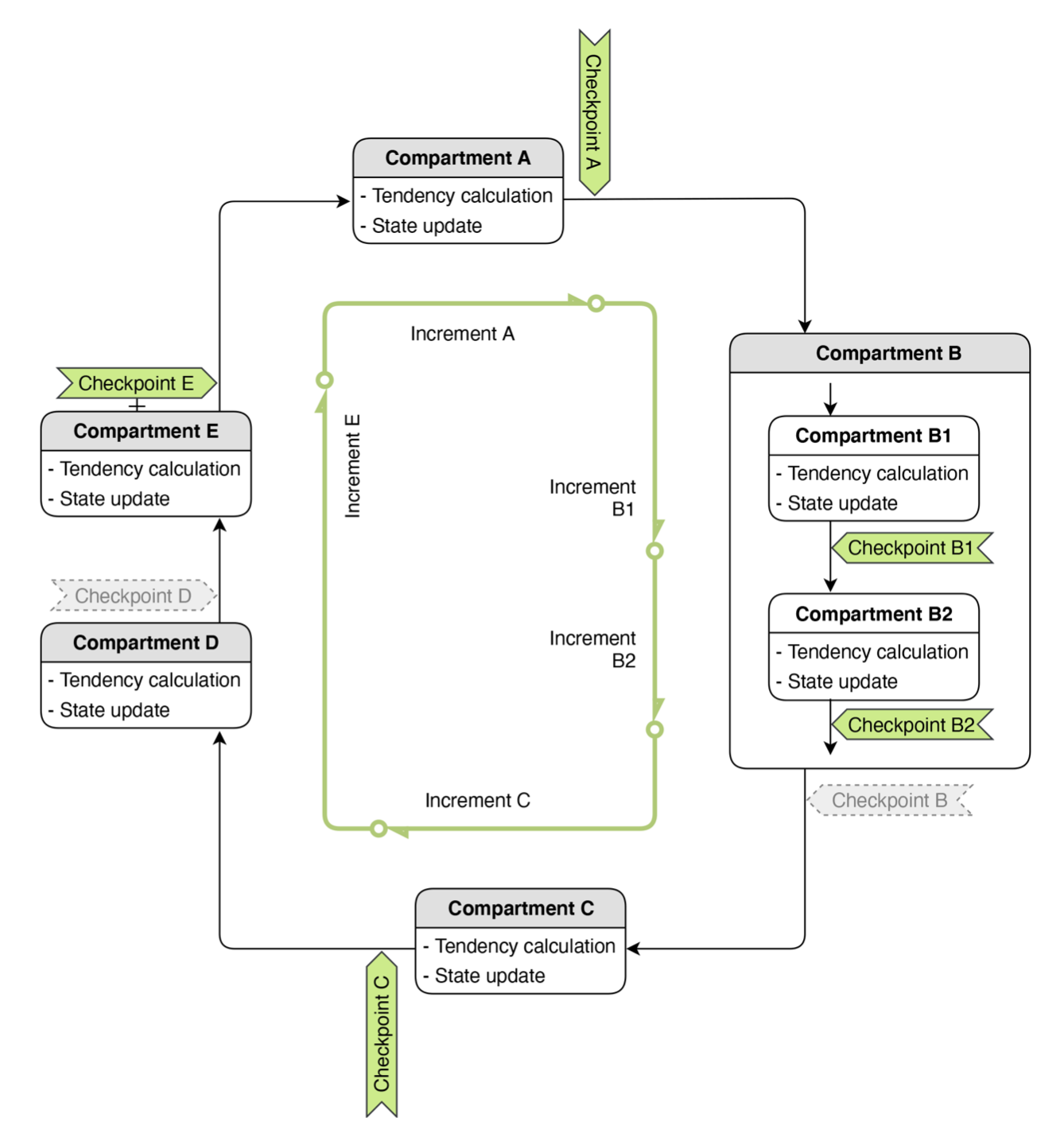Online Diagnostics Make Analyzing Modeled Atmospheric Processes Easier and More Efficient

A new online diagnostic tool embedded in E3SM’s atmosphere component can help the model developers and users understand how different physical processes contribute to the formation of, e.g., clouds and aerosols, without performing tedious coding or archiving huge amounts of data. (Image by Bill Smith | Flickr)
A newly developed online diagnostic tool helps E3SM developers and users analyze process-level relationships in the atmospheric component.
The Science
Numerical models used to predict the weather and climate must represent complex relationships between many atmospheric phenomena (processes). Analyzing these relationships during simulations often requires tedious coding, while performing analysis during postprocessing can require archiving huge amounts of data. A set of utility modules newly introduced to the source code of the Energy Exascale Earth System Model (E3SM) eliminates these obstacles and substantially simplifies workflows for performing detailed relationship analysis.
The Impact
Accurately simulating the relationships between atmospheric processes is crucial for improving the predictive skill of weather and climate models. This new tool makes it much easier for researchers to analyze model behavior at a fundamental level. It can help speed up model development and lead to better tools for weather and climate predictions. More accurate predictions can help decision makers prepare for future changes in weather and climate.
Summary
Large-scale simulations can provide researchers with important information about atmospheric processes. However, analyzing data during and after simulations to understand the complex relationships between these processes can require extensive amounts of data and coding. Researchers added new and flexible data and code structures to E3SM to capture process-level information when the simulations are being carried out on supercomputers (see, e.g., the checkpoints illustrated in Figure 1). The researchers also developed general algorithms for process tracking and conditional sampling based on typical use cases. These structures and algorithms allow E3SM users to obtain online diagnosis without tedious coding or archiving large amounts of data.
The new online diagnostic tool allows users to select sampling conditions and specify monitored variables at run time. Both the evolving values of the model variables and their increments caused by different atmospheric processes can be monitored and archived. The tool has other convenient features, such as the online calculation of vertical integrals and temporal statistics. It allows users to sample model data in multiple ways within a single simulation, improving the efficiency of such analysis.
The paper (Wan et al., 2022) provides a detailed description of the tool and demonstrates its usage through three examples: a global view of the sources and sinks of dust aerosols, the relationship between sea salt emission and wind speed at ocean surfaces, and changes in relative humidity caused by different atmospheric processes under conditions where ice cloud formation can happen. The tool was developed and implemented as part of E3SM, but the algorithms can be adapted for use with other weather and climate models.

Figure 1. A schematic illustrating some of the code structures used by the new online diagnostic tool in the E3SM Atmosphere Model. Checkpoints (green tags) are embedded in the model’s time integration loop to track the changes of the atmospheric state caused by different code compartments corresponding to different physical processes. These checkpoints are also used in conditional sampling. Further details can be found in Wan et al. (2022).
Publication
- Wan, Hui, Kai Zhang, Philip J. Rasch, Vincent E. Larson, Xubin Zeng, Shixuan Zhang, and Ross D Dixon. 2022. “CondiDiag1.0: A Flexible Online Diagnostic Tool for Conditional Sampling and Budget Analysis in the E3SM Atmosphere Model (EAM)”. Geoscientific Model Development 15 (8). Copernicus GmbH: 3205-3231. doi:10.5194/gmd-15-3205-2022.
Funding
- This research was primarily supported by the Department of Energy (DOE), Office of Science, the Scientific Discovery through Advanced Computing (SciDAC) program, under a partnership in Earth System Model Development between the Biological and Environmental Research (BER) and the Advanced Scientific Computing Research (ASCR). One of the authors was supported by DOE BER as part of the E3SM project.
Contact
- Hui Wan, Pacific Northwest National Laboratory
This article is a part of the E3SM “Floating Points” Newsletter, to read the full Newsletter check:


